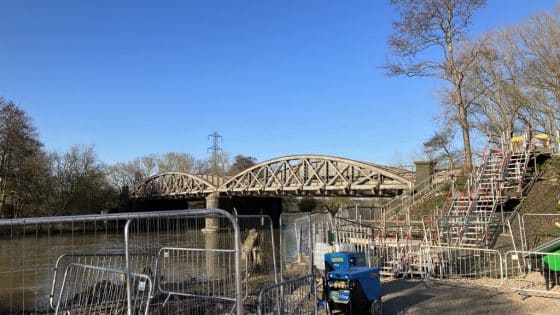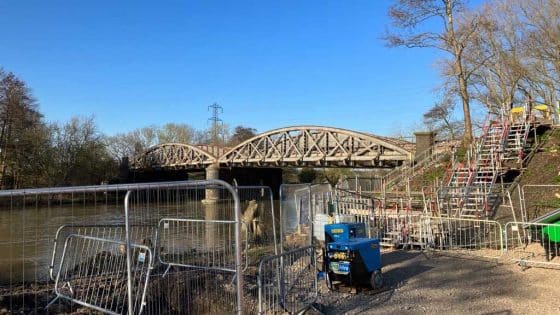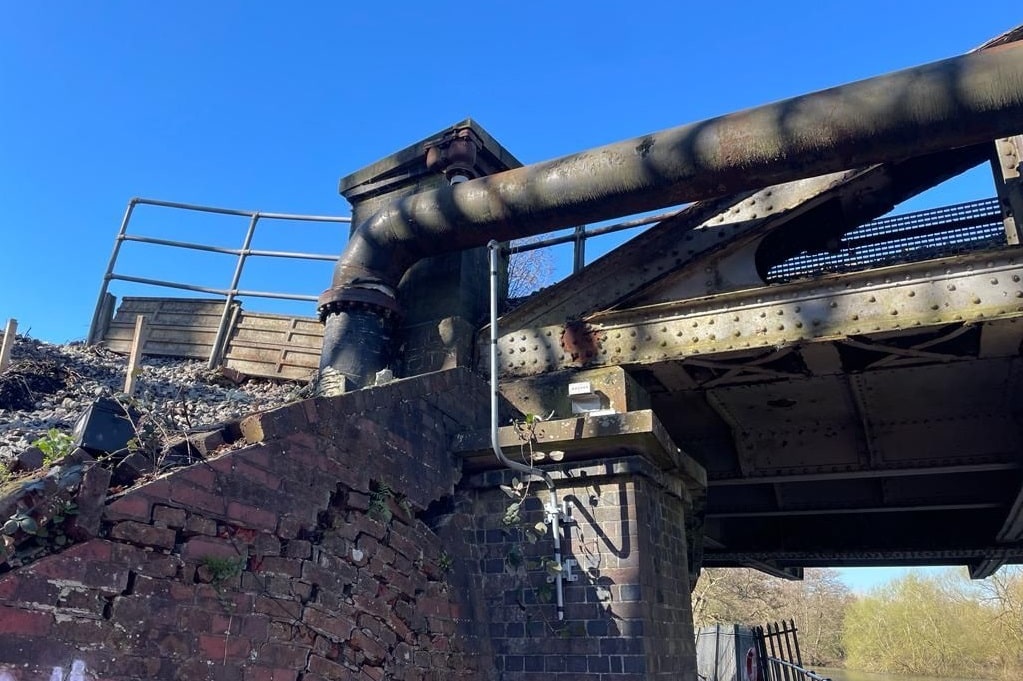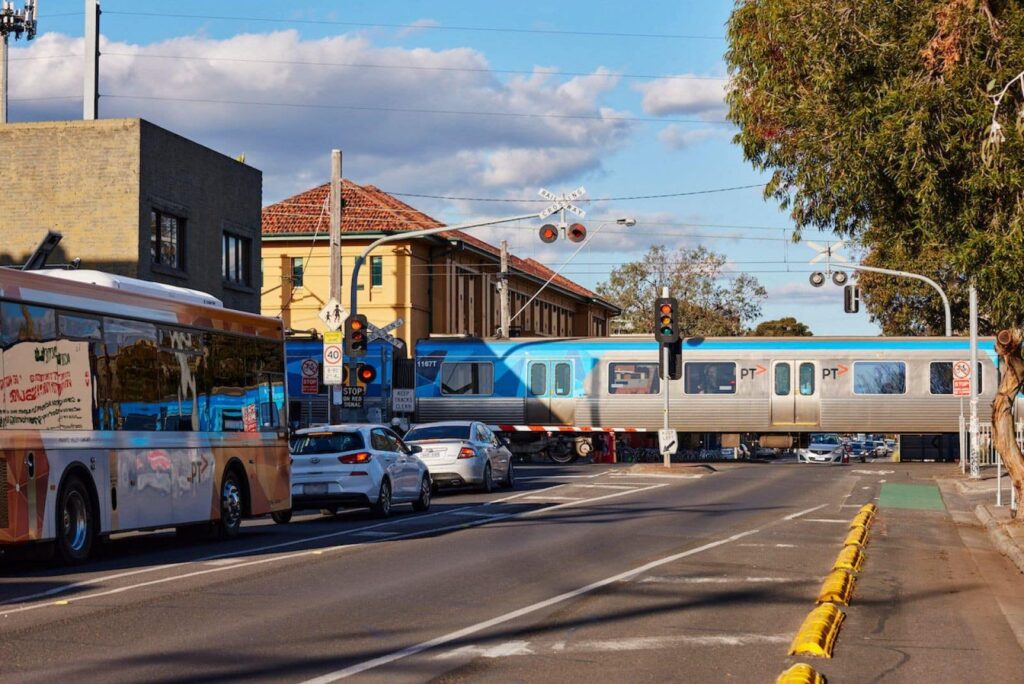Reopening hopes for ‘safety concern’ Nuneham Viaduct shift to end of April as investigations continue

This post was originally published on this site

The railway between Didcot Parkway and Oxford will be closed “until at least late April” as investigations into movement on the Nuneham Viaduct continue.
The viaduct was closed on 3 April after Network Rail’s monitoring equipment installed at the site showed increasing movement in the structure. Movement from the Nuneham Viaduct has “significantly worsened in recent weeks”, a Network Rail spokesperson told NCE. However, they declined to comment on where the movement within the structure had occurred but NCE understands that the issue is linked to one of the abutments.
Nuneham Viaduct crosses the River Thames near Abingdon in Oxfordshire. It was built in 1929 and is formed by of a pair of steel bowstring spans with a brick built pier in the centre of the river.
Network Rail was aware of an issue several weeks ago and had been working to resolve the problem before the rail infrastructure operator was forced to close the structure. The spokesperson said: “Network Rail has been monitoring the viaduct for some time because of its movement and has been undertaking engineering interventions to stabilise it.
“Unfortunately, the movement in the structure has significantly worsened in recent weeks and has now reached a point where it has exceeded the engineering parameters therefore it is not fit to carry passenger and freight trains.
“That is why Network Rail has taken the significant step of temporarily closing it.”
Detailed inspections of the bridge are underway.
It is now expected that the railway will remain closed “until at least late April”, the Network Rail spokesperson confirmed.
The viaduct is a key route for passenger and freight services. Services on Crosscountry Trains and Great Western Railway have been replaced by buses. It is also a key rail freight route to and from Southampton Docks and the Rail Freight Group has warned that the ongoing closure may cause a rise in road traffic as there are limited alternative routes for freight services.
A statement for the Rail Freight Group has revealed that speed restrictions had been in place for several months across the Nuneham Viaduct, suggesting that the issues have been known for some time, and that remedial work was already planned over Easter.
“The failure of the Nuneham Viaduct between Oxford and Didcot is currently causing some significant disruption for freight services,” said Rail Freight Group director general Maggie Simpson. “The bridge, built a century ago, has been declared unsafe by Network Rail, meaning that passenger trains are suspended and the 40 or so daily freight trains diverted, mostly via London and the West Coast Main Line.”
Simpson commended the swift response to investigate the problem by Network Rail and the collaboration to divert train services.
“These things of course happen,” she added. “Network Rail have noted the excessive rainfall earlier in the year, and the clearly emerging impact of climate change which is taking its toll on earthworks and bridge supports right across the network. They are right to reflect too on the tight financial settlement for the next five years which will make renewals of older structures even more challenging if money cannot be allocated to that.
“Yet there is a real concern that if critical infrastructure is not managed effectively there could be a decline in the capability of the network and the ability to meet freight customers’ reasonable needs. This cannot be allowed to happen, and we need action now to ensure we are better prepared. Critical assets for freight need to be identified, and contingency plans developed. Are diversionary routes available and fit for purpose? Is route knowledge in place? How are the assets being managed now to seek maximum outcomes for the longest time?
“We cannot allow climate change to become an excuse for complacency either. Speaking at our Annual Scottish Conference, Alex Hynes the CEO of Scotland’s Railway outlined the work they have been doing on managing flooding risks, including mapping of drainage assets, better lineside management right down to adjacent fields, and a more sophisticated understanding of the meteorology to inform decision making. This approach is focussed on keeping the network open for freight and passenger, and taking a proportionate response when adverse events happen.
“As businesses become more reliant on the railway as part of their supply chains it is only right that they can rely on the network to meet their needs. Critical infrastructure must be managed to ensure we do not let them down.”
While the closure of the structure is unplanned, UK Bridges Board chair and Transport Scotland chief bridge engineer Hazel McDonald commended the robust assessment process at Network Rail. She told NCE: “It appears the monitoring has been installed due to issues found during routine structure inspections, as part of Network Rail’s robust asset management practices.
“The monitoring has done its job by helping to keep the asset in service and then alerting engineers to an issue that needs investigation.
“It’s unfortunate that the structure has had to be closed while safety inspections are carried out but it’s the right thing to do where safety is concerned.”
Network Rail’s spokesperson was unable to confirm how many other similar bridge structure to the Nuneham Viaduct exist on its network and what the implications of the issues at Nuneham might be for other bridge assets.
Like what you’ve read? To receive New Civil Engineer’s daily and weekly newsletters click here.




Responses